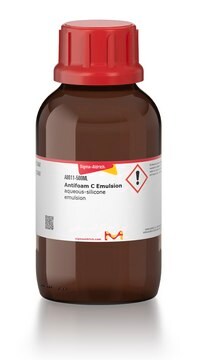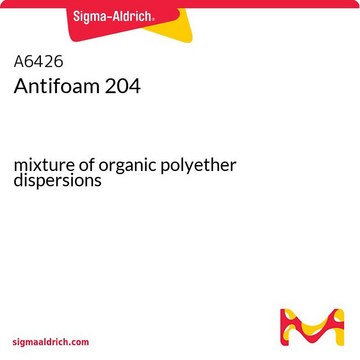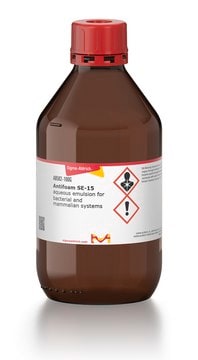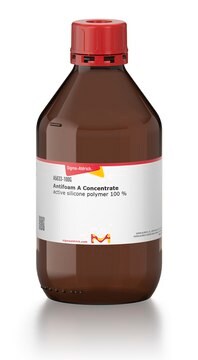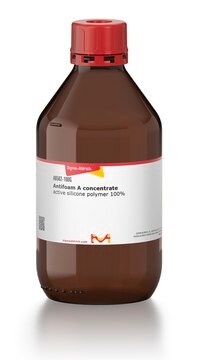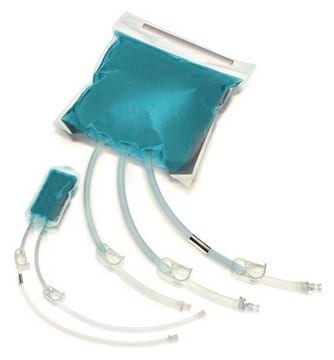A5757
Antifoam B Emulsion
aqueous-silicone emulsion
Sinonimo/i:
Antifoaming agent B
Autenticatiper visualizzare i prezzi riservati alla tua organizzazione & contrattuali
About This Item
Codice UNSPSC:
12161900
NACRES:
NA.25
Prodotti consigliati
Livello qualitativo
Stato
emulsion
contiene
emulsifier (different from those present in Antifoam A emulsion)
tecniche
cell culture | hybridoma: suitable
microbiological culture: suitable
Descrizione generale
Antifoam eliminates excessive foaming formed during impingement, due to proteins and/or carbohydrates in the collection medium. Antifoam B emulsion is a silicone based antifoam. Antifoam B emulsion does not affect the growth of bacteria. Antifoam B emulsion functions as an antifoaming agent in shake flask culture of bacteria.
Applicazioni
Antifoam B emulsion has been used:
- to enhance collection efficiency in collection media
- as a component in stress granule lysis buffer to reduce foaming, in host cell lysis buffer to reduce foaming caused by detergents
- to improve solubility of antibiotics
- as a foaming controls in bacterial growth media
Altre note
A 10% aqueous emulsion of polydimethylsiloxane
Codice della classe di stoccaggio
10 - Combustible liquids
Classe di pericolosità dell'acqua (WGK)
WGK 3
Punto d’infiammabilità (°F)
>214.0 °F - closed cup
Punto d’infiammabilità (°C)
> 101.1 °C - closed cup
Scegli una delle versioni più recenti:
Possiedi già questo prodotto?
I documenti relativi ai prodotti acquistati recentemente sono disponibili nell’Archivio dei documenti.
I clienti hanno visto anche
Isolation of yeast and mammalian stress granule cores
Wheeler JR, et al.
Methods, 126, 12-17 (2017)
Celeste J Brown et al.
PloS one, 8(3), e60401-e60401 (2013-03-28)
Observing organisms that evolve in response to strong selection over very short time scales allows the determination of the molecular mechanisms underlying adaptation. Although dissecting these molecular mechanisms is expensive and time-consuming, general patterns can be detected from repeated experiments
Separation of metabolic supply and demand: aerobic glycolysis as a normal physiological response to fluctuating energetic demands in the membrane
Epstein T, et al.
Cancer & Metabolism, 2(1), 7-7 (2014)
High-Throughput Quantification of Bacterial-Cell Interactions Using Virtual Colony Counts
Hoffmann S, et al.
Frontiers in Cellular and Infection Microbiology, 8, 43-43 (2018)
Fermentation pH modulates the size distributions and functional properties of Gluconobacter albidus TMW 2.1191 levan
Ua-Arak T, et al.
Frontiers in Microbiology, 8, 807-807 (2017)
Il team dei nostri ricercatori vanta grande esperienza in tutte le aree della ricerca quali Life Science, scienza dei materiali, sintesi chimica, cromatografia, discipline analitiche, ecc..
Contatta l'Assistenza Tecnica.